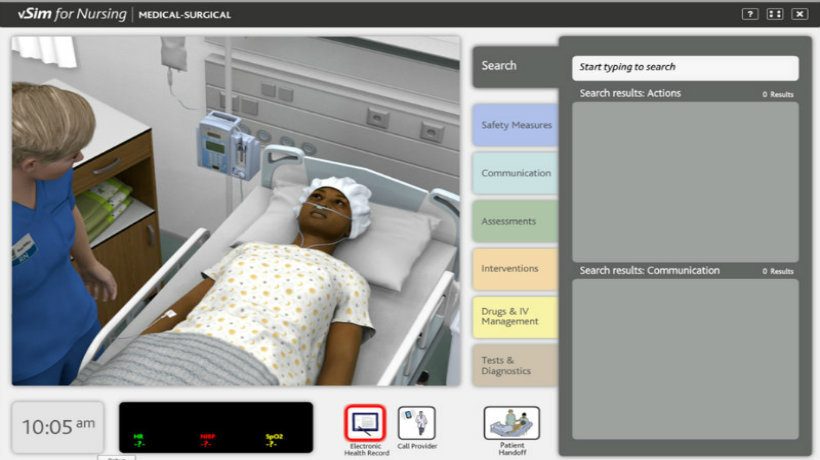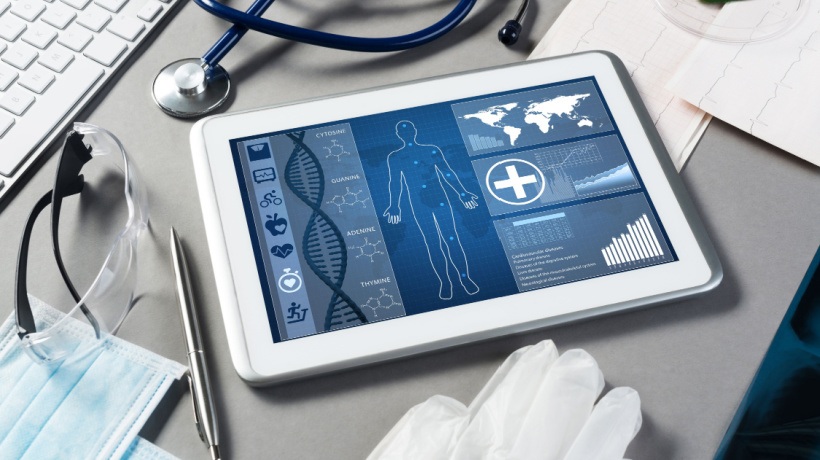The Role Of Medical Simulation In Today's Learning
Simulation as a technology finds use in practice and learning in many different disciplines. It replaces and simulates real experiences in the form of guided situations and experiences that are often immersive and amplified to ensure accurate and specific learning in a fully interactive fashion. Simulation-based training tools, techniques, and strategies find use in designing structured learning experiences. They are also used as a tool to measure targeted teamwork and competencies in the background of specific learning objectives. Simulation is widely used in high-hazard professions, such as aviation, nuclear power, and medicine. And what about medical simulation?
In the medical world, simulation-based learning programs are used to develop health professionals’ knowledge, skills, and attitudes. This is crucial especially in the context of new and pioneering treatment approaches where it is necessary to protect patients from risks. There has been significant interest, acceptance, and use of simulation recently as a learning tool and as an assessment for accreditation. Simulation is now an integral part of medical education with an increasing number of healthcare institutions and medical schools embracing simulation-based learning.
Use Of Simulations
Simulations make students the active participants, while teachers become active guides in a heuristic learning environment.
Full-body mannequin simulators were used in anesthesia in the late 1960s for training in endotracheal intubation and induction of anesthesia. In the 1980s, when PCs became less expensive and simulation software became available, simulator systems began to be developed and used in military training, aviation, nuclear power generation, and space flights. In the early 1990s, comprehensive anesthesia simulation modules such as the MedSim and the Medical Education Technologies Inc. (METI) Advanced Human Patient Simulator were used. Simulation training concepts used in aviation were introduced into anesthesia, critical care, emergency medicine, obstetrics, and internal medicine. Simulator models now provide computerized models that closely match human physiology.
Simulation-based medical education is a necessity today since it is a platform which provides a learning methodology while resolving ethical tensions and practical dilemmas. In the field of medicine, simulation is specifically invaluable for training interdisciplinary medical teams where it provides realistic scenarios and equipment that allow for continuous training and practice until mastery is achieved in the procedure or skill. A simulated training environment offers an additional dimension to traditional instruction modules while enhancing performance, and also reducing errors.
Elements Of Medical Simulation Programs
Simulation programs provide experiential learning and involve a model that is the digital representation of a physical system such as a patient, a body part, or an instrument. The attributes and behavior of these models can be changed to represent complex and diverse situations. The model that is developed and verified by experts in computer systems and the respective medical specializations can simulate the real physical system with complexity and accuracy.
The simulation system also includes the model executor that is a software program that interacts with the learner through a specific user interface. A recording interface that captures the stimuli to the model and the learner behavior during the training is used to analyze the learner’s performance and suggest appropriate corrections.
The user interface is used by the learner to interact with the model that is typically web based or through installed applications with newer simulations using a tablet or mobile as the interface. The hardware or the appearance of simulations is closer to the situations that emerge in real life.
Benefits And Uses
Simulation enables the learner to internalize the skills needed in real world situations and is, therefore, useful in learning and practicing a wide range of healthcare and safety related concepts and skills. Medical simulation facilitates upgrading skills and has become a vital part of the curriculum in subjects like CPR, SEPSIS, and other life saving techniques. Simulation allows medical staff, nursing, and other healthcare professionals the opportunity to develop and polish their skills, repeatedly if needed without any risk to patients. Simulation programs introduce new techniques and equipment and offer medical professionals the opportunity to practice and manage complex and dynamic medical situations. Medical professionals can also apply the skills they learn on simulation programs and then analyze performance in simulated real-life situations.

Simulations are guided scenarios to learning and are therefore controllable. In a real life scenario, the teacher and learner have less control over the scenario and have greater risk of errors. It is possible to pause and control simulations in many ways that allow learners more time to register what they have learnt. Simulations allow practice in diverse scenarios.
 Simulation programs can provide training in technical and functional expertise. They can enhance problem-solving and decision-making skills, interpersonal and communication skills, and other team-based competencies. The overall benefits of simulation-based learning include:
Simulation programs can provide training in technical and functional expertise. They can enhance problem-solving and decision-making skills, interpersonal and communication skills, and other team-based competencies. The overall benefits of simulation-based learning include:
- Medical learning cannot be merely theoretical knowledge alone and simulations provide empirical knowledge and help develop the practical knowledge.
- The learner’s experiences in simulations are fully immersive and interactive that enables the learners to be more involved in the near real-life scenarios of learning
- The learners have complete participation and gain hands-on practice.
- Simulation has more learner involvement that makes the process more interesting and motivating.
- It is possible for simulations to be customized to offer guided scenarios to tailor to the needs of the learner.
- Better training for medical staff.
- Better patient care and safety.
- Cost-effective and comprehensive training.
- Reduced or minimal exposure to risky real-life situations.
- Continuous skills training and improvement.
- Faster, cheaper and efficient healthcare services.
- Fine-tune skills and procedures before moving to actual procedures.
Success Factors
Simulation requires a high level of fidelity in order to be effective. The effectiveness of the program would be compromised if the environment and factors do not match or obey the rules of reality. Another related factor is attention to the details of the scenario. The debriefing provided by the system is also important in simulation's effectiveness as a teaching tool. Debriefing of simulations based scenarios help associations to be made between abstract knowledge and events in the scenario. Debrief should provide a discussion of skills and video playback along with instructor input. Debriefing the scenario enables the learner to remain engaged during the analysis of any incorrect decisions and helps build a framework for dealing with the clinical problem. Apart from these, social learning is also important since simulation is a social endeavor. Integrating simulation into traditional education programs is important for the success of simulation training, along with the active engagement of clinical faculty in the process of development of a program.
Conclusion
Simulation provides experiential learning and reflective practice with elements of behaviorist learning. It provides an immersive environment that has anchored instruction delivering situational learning. Simulation-based training allows evidence-based practices to be incorporated into practical learning and action using protocols and algorithms.
Medical simulation has the potential to be a long term solution to the training and development needs of the medical community. It can be used as a tool in evaluating candidates for medical school admission, while medical simulation games may provide the diversity in medical training with some amount of time being dedicated to learning through gaming. Research needs to be carried out extensively to determine whether simulation improves patient outcomes. For this the technology of virtual reality has to be enhanced to make simulation experiences as seamless as possible. Designers and technology solution providers have an important role to play to improve the efficiency of this technology.
However, when compared to other industries simulation application in healthcare has lagged behind due to high cost, resistance to change and lack of rigorous proof of effect. The efforts of the medical community and the policy makers are needed to create a positive atmosphere for expanding the use of simulators in medical training.
Further, time and energy apart from other resources are needed to create a structured simulation training curriculum. The medical community needs to be engaged in this initiative. The adoption of medical simulation as a standard mode of training and certification would go a long way towards making healthcare systems more accountable and ethical.
* All photos courtesy of Laerdal Medical.









